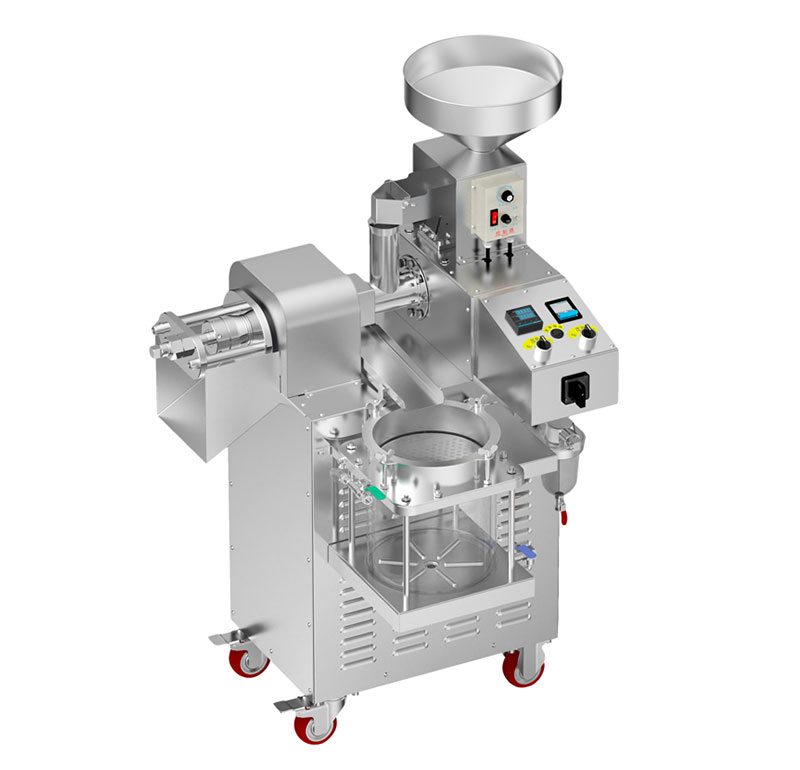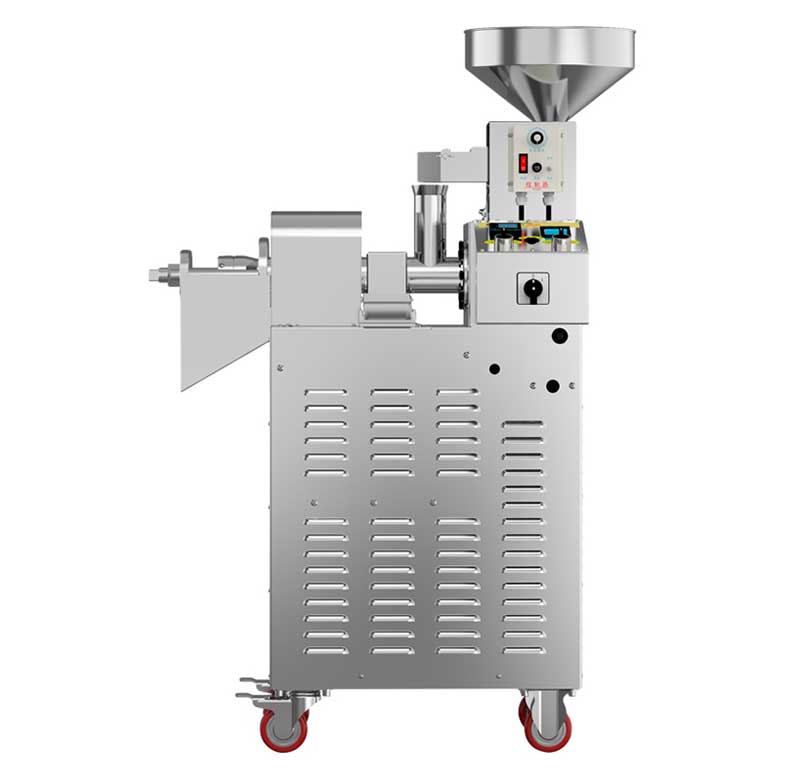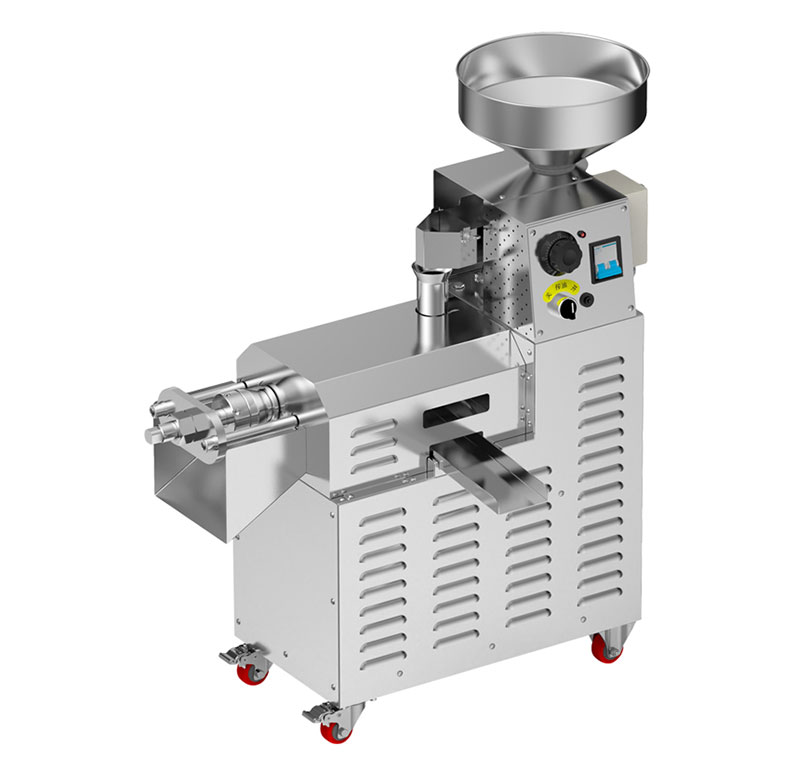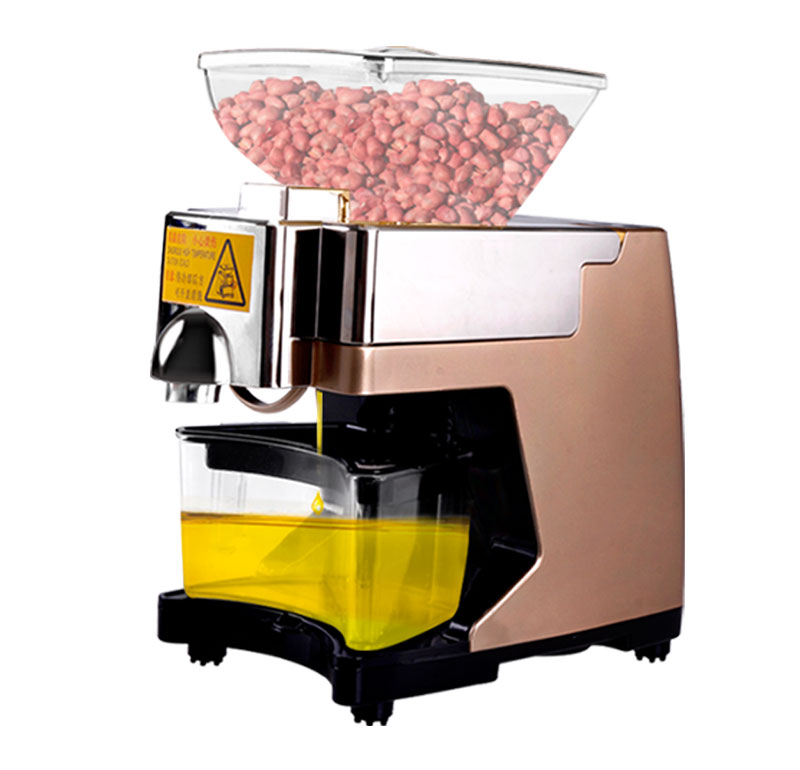When the oil press is pressing raw materials, the foam should be solved as
The phenomenon of oil foaming is also called silt pot. Generally, this phenomenon occurs when the oil raw material adopts the hot pressing method. During the operation of the oil press, the cake should be produced normally, and the moisture of the billet should be controlled neither too high nor too low. Generally speaking, the normal cake should be in the form of flakes, one side by the screw shaft is smooth, and the other side has many hair lines. If the cake is loose and weak, or the cake is not formed, the color is dark, and it will break into pieces when you pinch it with your hands, which means that the dough has too little water; It means adding too much water. Under normal circumstances, there is no slag or very little slag between the round rows, and slag is produced at the strip row. If the slag is in the form of fine flakes, it means that the water is high, and the powder slag means that the water is low. In addition, the change of the oil outlet position can be used to see whether the water in the pressing is suitable. When the water in the pressing is too high or too low, the oil outlet position moves backward. If the cake is not formed or the foam increases, it should be dealt with in time, and it should not be taken lightly.
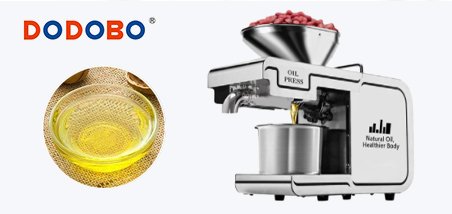
① Take it out with a spoon or settle and hydrate naturally, and then there is cold filtration, the hydration is more thorough, pour the oil into the pot, and the high temperature can remove the oil foam. If there is a container for holding the oil, you can take the oil into the pot once, and then pour it into the container, and there will be no oil foam next time.
②You can throw ginger slices in the bubbles, which can help, but the effect of too much bubbles is not very obvious. Caused by excessive water or phosphorus content
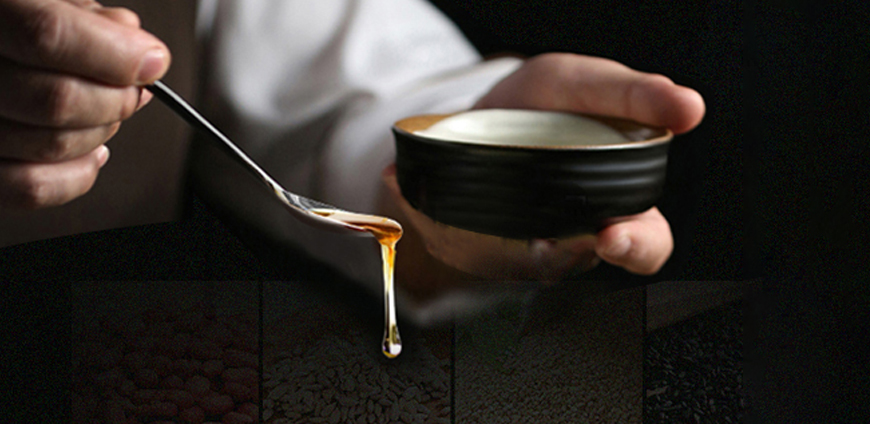
③ For hydration and degumming, add half a catty of salt water to 35 catties of crude oil. The salt is about 22 taels. After stirring, pour it into the centrifuge. After 20 minutes in the centrifuge, it is regarded as refined oil. The crude oil has just been pressed and cooled to an oil temperature of 70 to 80 degrees. Stir it with 3% salt and boiling water, and stir until the surface of the crude oil has no foam. Pump it into a centrifugal filter to filter and then cool the oil to between 30 and 40 degrees. Warm up to 120 degrees to cool the precipitation.




































































